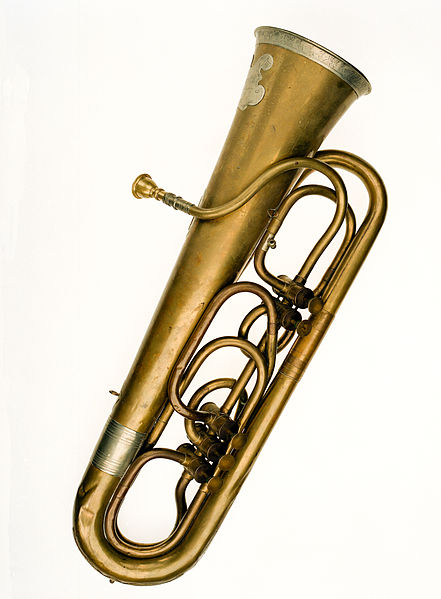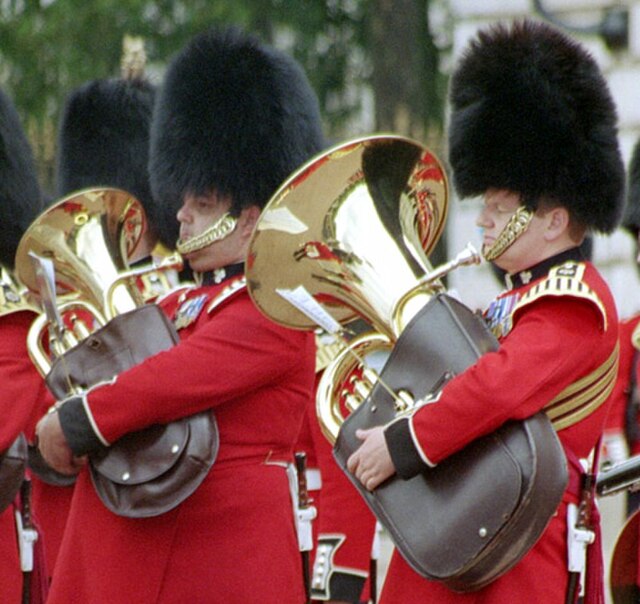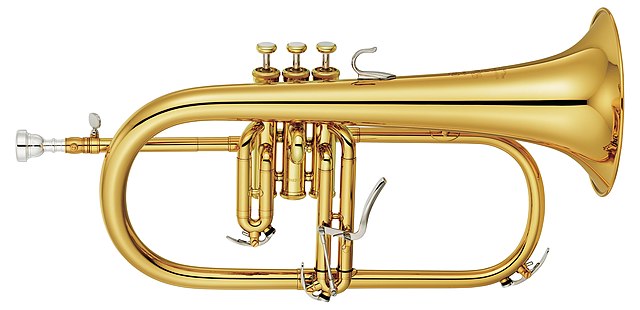The tuba is the largest and lowest-pitched musical instrument in the brass family. As with all brass instruments, the sound is produced by lip vibration – a buzz – into a mouthpiece. It first appeared in the mid-19th century, making it one of the newer instruments in the modern orchestra and concert band, and largely replaced the ophicleide. Tuba is Latin for "trumpet".
A bass tuba in F with front-action piston valves
Tuba by Wieprecht & Moritz as described in Prussian patent No.19.
Tuba section (known as "bass section") in a British style brass band, consisting of two E♭ and two BB♭ tubas
Comparison of euphonium (left) and tuba (right)
A brass instrument is a musical instrument that produces sound by sympathetic vibration of air in a tubular resonator in sympathy with the vibration of the player's lips. Brass instruments are also called labrosones or labrophones, from Latin and Greek elements meaning 'lip' and 'sound'.
Six high brass instruments Left, from top: A reproduction baroque trumpet in D, a modern trumpet in B♭, a modern trumpet in D, a piccolo trumpet in B♭ (octave higher), and a flugelhorn in B♭. Right: a cornet in B♭.
A tenor horn (alto horn) in E♭, baritone horn in B♭, and euphonium in B♭
Brass instrument piston valves
Flugelhorn with three pistons and a trigger








